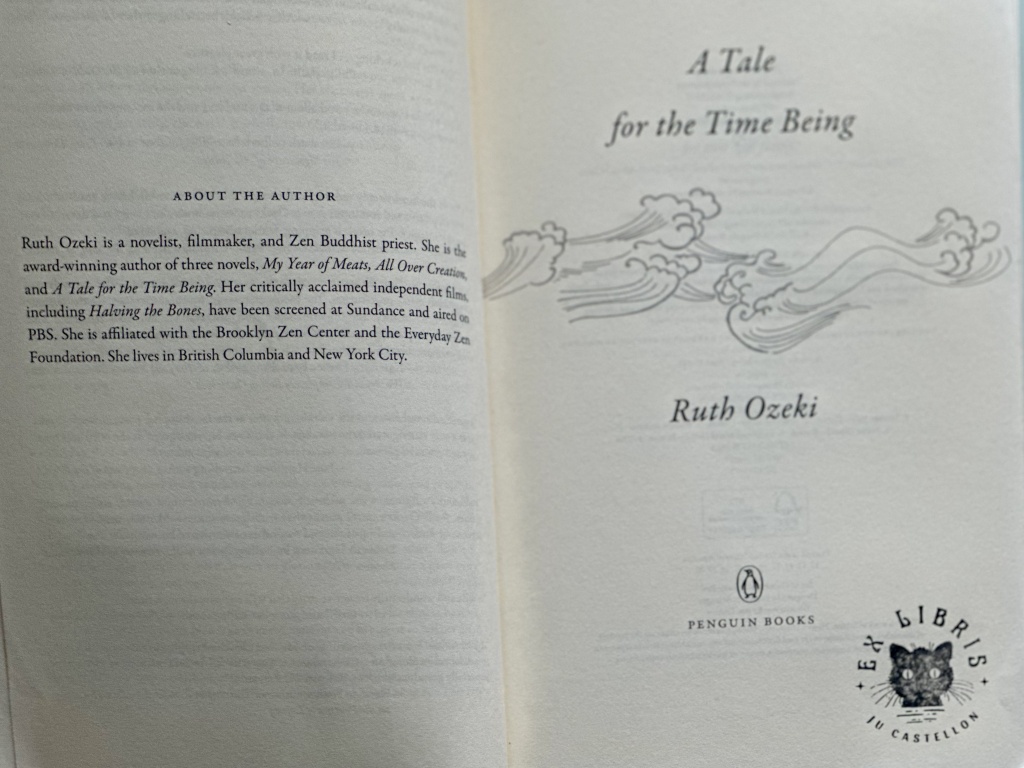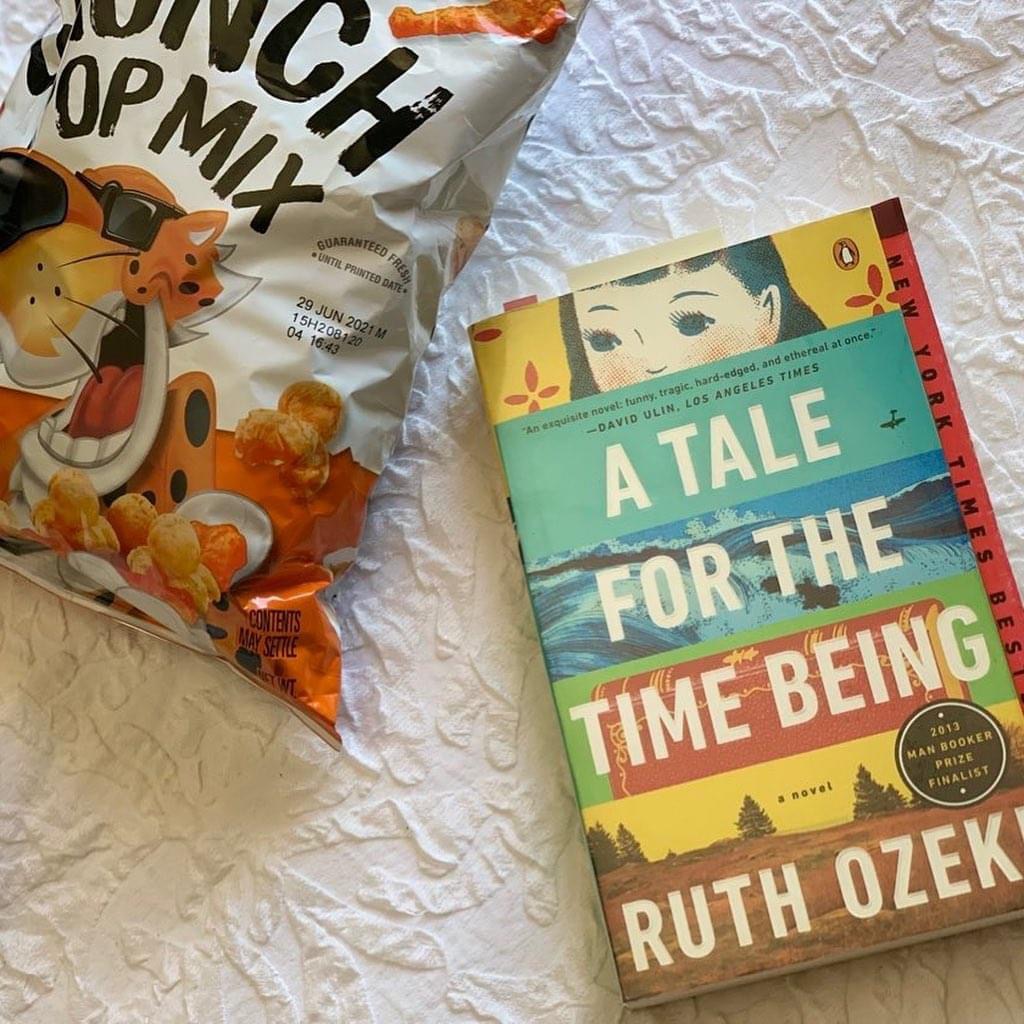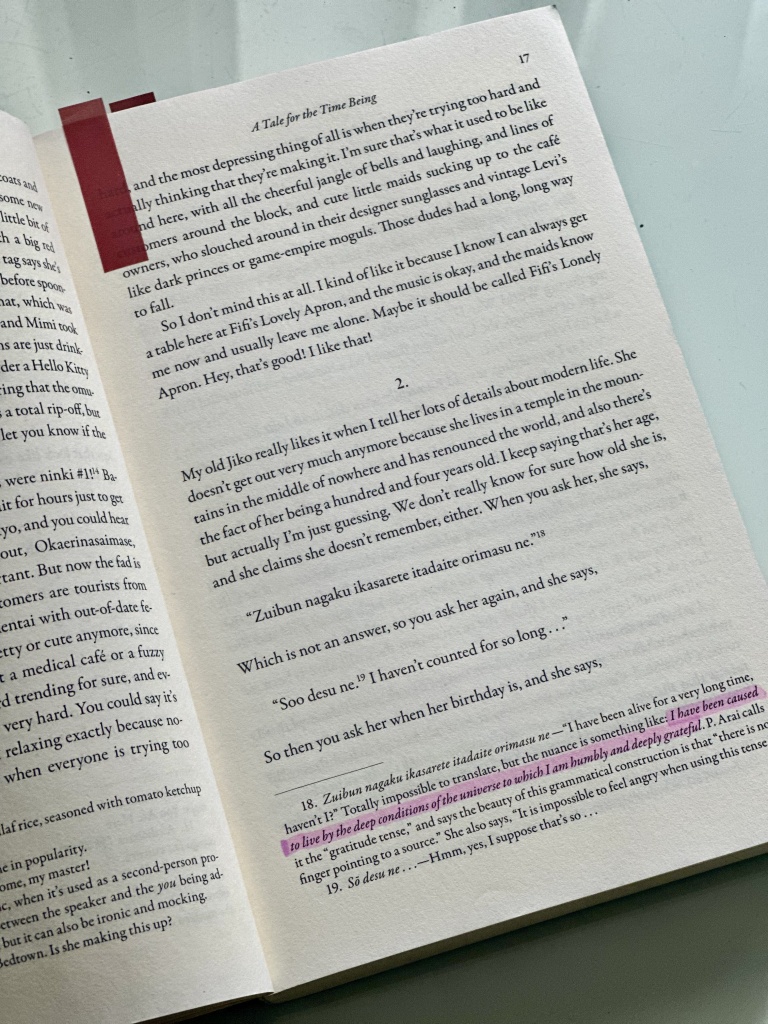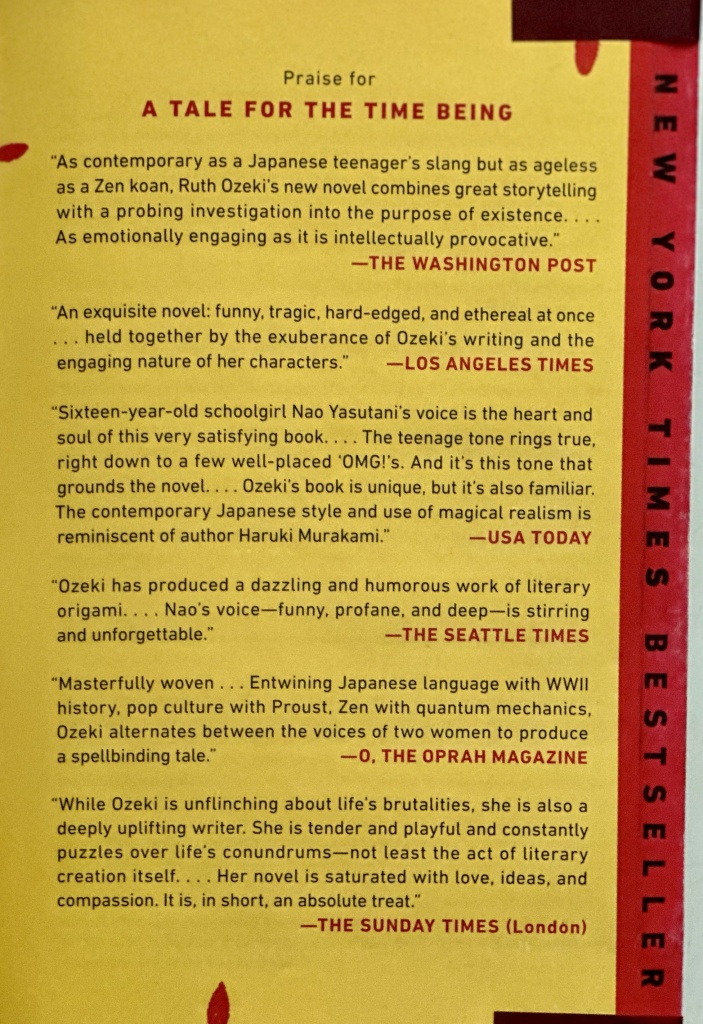Ruth Ozeki’s novel, “A Tale for the Time Being,” is a curious blend of introspection, cultural exploration, and a meditation on the nature of time. The story oscillates between two vastly different worlds – that of Nao, a Japanese teenager facing life’s harsh realities, and Ruth, a writer living on a secluded Canadian island. Their lives intersect through a diary, setting off a narrative that is as much about finding oneself as it is about understanding the ephemeral quality of existence.
The Heart of the Story
At its core, Ozeki’s novel is about connections that transcend the barriers of time and space. Nao’s diary serves as a cry for help, a longing to be understood and remembered. Her vivid recounting of life in Tokyo provides a stark contrast to Ruth’s quiet existence, yet both characters are searching for meaning in a seemingly indifferent universe.
I believe it doesn’t matter what it is, as long as you can find something concrete to keep you busy while you are living your meaningless life
Nao’s relationship with her great-grandmother, a Buddhist nun, introduces deepphilosophical inquiries into the narrative. These moments are some of the novel’s strongest, offering insight into Japanese culture and Zen Buddhism while exploring themes of suffering, impermanence, and pursuing enlightenment.

A Complex Narrative
One of the most compelling aspects of “A Tale for the Time Being” is its narrative structure. Ozeki skillfully weaves together Nao’s diary entries, her perspective, and footnotes that add cultural and historical context. This approach creates a rich tapestry of stories and ideas, though, at times, it can feel overwhelming. The shift between voices and the depth of information presented requires careful attention from the reader, which might detract from the overall narrative flow.

Themes and Execution
Ozeki doesn’t shy away from tackling heavy themes such as bullying, suicide, and the impact of war. These elements add weight to the narrative, making Nao’s struggles palpable and heart-wrenching. However, the novel’s ambitious scope sometimes feels like a double-edged sword. In its quest to cover an expansive thematic ground, the story occasionally loses its focus, leaving some plotlines underdeveloped or unresolved.
Final Thoughts
“A Tale for the Time Being” is a thought-provoking exploration of human connectedness, the passage of time, and the stories that define us. Ozeki’s narrative is ambitious and layered, filled with emotional depth and philosophical musings. While the novel’s complexity and pacing may not appeal to all readers, those willing to immerse themselves in its pages will find a unique and rewarding experience.
In essence, Ozeki has crafted a narrative that encourages reflection on our place in the world and the legacy we leave behind. “A Tale for the Time Being” is a proof of the power of storytelling, urging readers to consider how, across time and space, we are all inextricably linked to one another.




